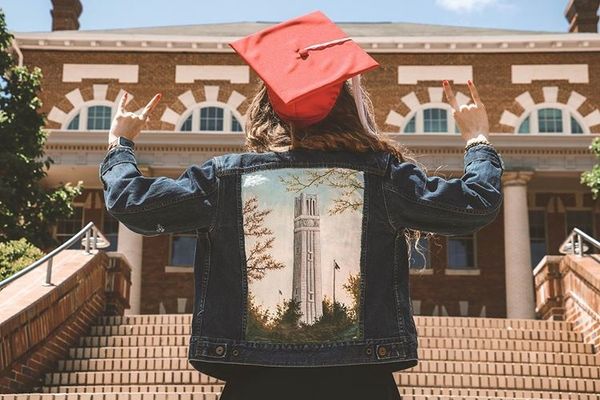This is an analysis on what the UNG Legend of the Hawk on top of the Golden Spire means. Before reading this please check out the main article.
The Price Memorial is the centerpiece of UNG's Dahlonega campus. It was built in 1879 after the US Mint burned down in 1878. Price Memorial was pretty much the only building on campus during the early years of the college. There are four hawks mentioned in the legend to represent four different generations of the school's history.
The Generations of Hawks.
The Hawks represent history, more specifically, the recording of history. The history of the University of North Georgia dates far back to 1873. Dahlonega is known for being the city were the Gold Rush in Georgia began. The gold in Georgia is different than California's because it is of a purer type. In the second paragraph I write that the hawks "knew the people who once lived in the lands who were the original discoverers of gold before the strange city folks moved in." This is referring to Dahlonega's original residents, the Native Americans. Dahlonega's name is derived from the Cherokee Indian word "ta-lo-ne-ga". This means yellow, which refers to the gold that was found in the region. Later, this gold would be the result of the "Trail of Tears." The city would later be called Dahlonega in 1837.
The Grandfather Hawk.
The grandfather hawk is from the later years of UNG's heritage of when it was called North Georgia College (1929-1996). His recollection of UNG is a lot different. In his day, there were less people than there are now. This hawk witnessed President Rogers (1933-1949) of NGC sign for the building of numerous buildings such as the Chapel and Dining Hall (Nix), Rogers, Sanford Hall, Stewart Library (Young Hall), and the Infirmary. He is also responsible for creation the famous Drill Field which was initially covered in rocks and rotten corn. The Grandfather Hawk mentions two people: Gaillard and Daddy Barnes. The barracks known as Gaillard was named after Benjamin Palmer Gaillard who was a professor for 60 years for the college. He was part of the college from 1874 to 1930. Daddy Barnes was John C. Barnes and Barnes Hall was named in honor of him. He was a prominent faculty member and served from 1900 to 1950. He was a professor of math, college treasurer and even a Commandant for the school. The Grandfather Hawk speaks of people who were not in normal clothes. He is referring to the cadets on campus. The college formed its ROTC program in 1916 and the title of Military College of Georgia was soon added to the university. North Georgia is well known for it's Corps of Cadets program.
Great Grandfather Hawk.
This is the hawk from the original college which was called North Georgia Agricultural College and it ran from 1873-1929. This hawk has seen a lot of the forgotten history of UNG. The Price Memorial was once called "The Main Building" as it was the main academic building till Bostwick Hall was built in 1900. This hawk also saw a great fire burn down Bostwick Hall in 1914. This fire is important because the building contained the school's library and all of the science labs. This makes some of UNG's history forgotten. The land that is known as the Drill Field at UNG was once a field for crops. The city during that time was a quieter place than it is now.
The Young Hawk.
The young hawk, which the story is about, represents UNG's present and future. His father represents the brief history of North Georgia College and State University (NGCSU) which ran from 1996 to 2013. When the young hawk was a little baby, he saw a lot of the Saint Bernard which was the mascot for NGCSU. He rarely sees them because the mascot was changed to the Nighthawk when the college consolidated with Gainesville State College in 2013. Now the young Hawk sees few of the "Green" looking people, who are the cadets, because of the great increase in civilian enrollments over the past years. This would be a shock to the great grandfather hawk.
Overall, this story acts as an analogy on the history of UNG. Not many people know of the history of UNG, and the legend of the hawk is a reminder that we as students must preserve this history by respecting our numerous traditions and learning our own heritage. Maybe we too should become the hawk looking over our beloved history.





















